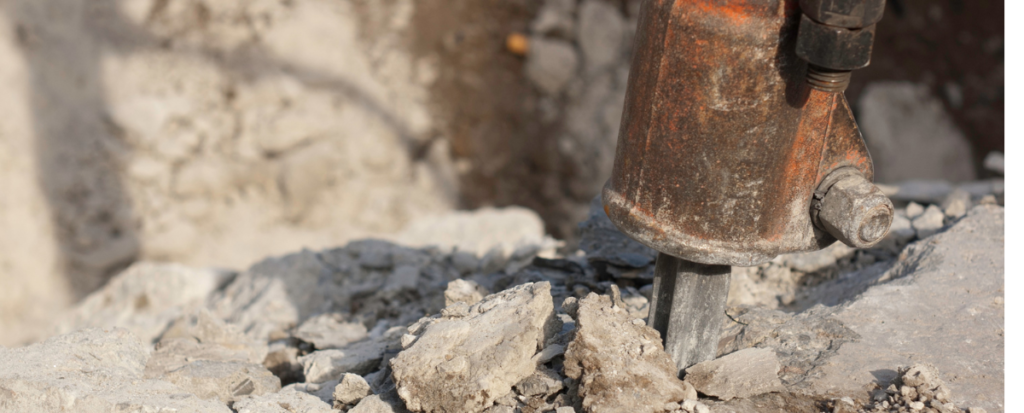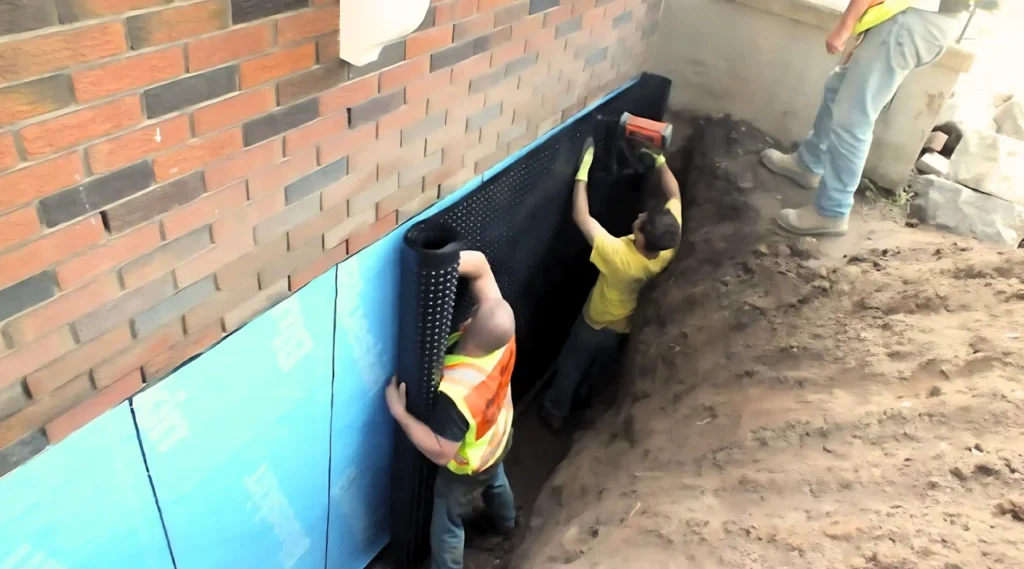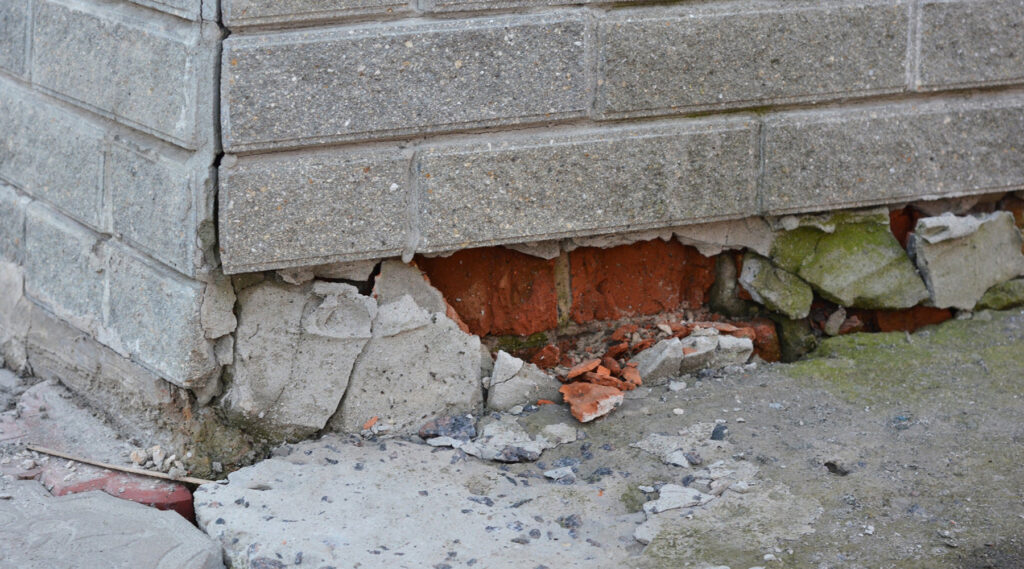Concrete jacking is a repair technique that lifts and levels sunken concrete slabs by injecting material underneath them to fill voids and raise the surface back to its original position. This method is called slab jacking, mud jacking, or concrete lifting. Moreover, it’s typically 50-80% less expensive than complete concrete replacement while providing long-lasting results.
Therefore, understanding concrete jacking helps you make informed decisions about repairing settled concrete surfaces. Let’s explore how this technique works, when to use it, and what benefits it provides.
What Is Concrete Jacking?
Concrete jacking is a minimally invasive repair method that raises sunken concrete slabs by pumping material through small holes drilled in the concrete. The injected material fills voids beneath the slab and creates pressure that lifts the concrete back to its proper level.
This technique has been used since the 1930s with a cement-based slurry mixture. Concrete jacking uses various materials, including traditional cement mixtures, polyurethane foam, and specialized lifting compounds. Additionally, modern equipment allows for precise control and faster completion times.
Common names for concrete jacking:
- Slab jacking or slab lifting
- Mud jacking or mudjacking
- Concrete lifting or concrete raising
- Pressure grouting
- Polyurethane concrete lifting
- Foundation underpinning (for foundation applications)
Research from the American Concrete Institute shows that properly executed concrete jacking can restore 95-100% of the original slab strength and stability.
Why Does Concrete Settle and Sink?
Soil-Related Causes
Most concrete settling results from changes in the soil beneath the slabs.
Common soil problems:
- Soil erosion: Water washing away the supporting soil
- Poor compaction: Inadequate soil preparation during construction
- Expansive clay: Soil that swells and shrinks with moisture changes
- Organic matter decay: Decomposing roots or debris create voids
- Freeze-thaw cycles: Repeated freezing causes soil movement
- Drought conditions: Soil shrinkage during extended dry periods
The International Concrete Repair Institute reports that 80% of concrete settlement issues stem from soil-related problems. Furthermore, these issues often worsen over time without intervention.
Water-Related Issues
Water is the primary factor in most concrete settling problems.
Water damage mechanisms:
- Washout: Water carrying away supporting soil
- Saturation: Oversaturated soil loses bearing capacity
- Drainage problems: Poor water management around concrete
- Plumbing leaks: Underground leaks undermining concrete support
- Surface water: Runoff concentrates under concrete slabs
- Groundwater changes: Fluctuating water tables affecting soil stability
Proper drainage is crucial for preventing concrete settlement. Additionally, addressing water issues prevents future settling after concrete jacking repairs.
Construction-Related Factors
Poor initial construction practices contribute to concrete settling.
Construction issues:
- Inadequate base preparation: Insufficient gravel base or compaction
- Poor drainage design: Lack of proper water management systems
- Subgrade problems: Building on unsuitable soil without modification
- Utility trenches: Poorly backfilled trenches under concrete
- Tree root interference: Roots growing under the concrete are causing movement
- Heavy load concentration: Excessive loads on inadequately supported areas
These problems may not appear immediately, but often cause settling within 5-15 years of construction. Moreover, they typically require concrete jacking and corrective measures to prevent recurrence.
What Are the Different Concrete Jacking Techniques?
Traditional Mud Jacking
Traditional mud jacking uses a cement-based slurry mixture pumped through larger holes in the concrete.
Mud jacking characteristics:
- Material: Cement, sand, water, and sometimes fly ash or lime
- Hole size: Typically 1-2 inches in diameter
- Equipment: High-pressure pumps and mixing equipment
- Curing time: 24-48 hours before full use
- Cost: Generally, the least expensive option
- Durability: 5-10 years typical lifespan
Advantages – Mud jacking :
- Lower initial cost than other methods
- Proven technique with a long track record
- Suitable for large areas and heavy loads
- Materials readily available
- Can be done in various weather conditions
Mud jacking limitations:
- Larger holes required (more visible repairs)
- Heavier material adds weight to soil
- Longer curing time before use
- May wash out over time
- Limited precision in lifting control
Polyurethane Foam Jacking
Expanding foam is injected through small holes to lift concrete in a method called polyurethane foam jacking.
Characteristics: Polyurethane
- Material: Two-part polyurethane foam that expands when mixed
- Hole size: Typically 5/8 inch diameter
- Equipment: Specialized foam injection equipment
- Curing time: 15-30 minutes before use
- Cost: Higher initial cost than mud jacking
- Durability: 10-15+ years typical lifespan
Polyurethane advantages:
- Smaller, less visible holes
- Lightweight material doesn’t add soil stress
- Fast curing allows immediate use
- Precise lifting control
- Water-resistant and won’t wash out
- Environmentally friendly
Polyurethane limitations:
- Higher material and equipment costs
- Requires specialized training and equipment
- Temperature-sensitive application
- May not be suitable for hefty loads
- Limited availability in some areas
Hybrid and Specialized Methods
Some contractors use hybrid approaches or specialized materials for specific situations.
Specialized techniques:
- Structural foam: High-density foam for heavy-duty applications
- Cement-foam mixtures: Combining the benefits of both approaches
- Resin injection: Chemical resins for specific soil conditions
- Compaction grouting: Dense material for soil stabilization
- Pressure grouting: High-pressure injection for deep repairs
These methods are typically used for complex situations or specific performance requirements. Additionally, structural engineers may recommend them for critical applications.
When Should You Consider Concrete Jacking?

Ideal Conditions for Concrete Jacking
Concrete jacking works best when specific conditions are met.
Good candidates for jacking:
- Structurally sound concrete: No major cracks or deterioration
- Settlement issues: Sinking or uneven concrete surfaces
- Stable soil conditions: Underlying soil capable of supporting loads
- Accessible locations: Equipment can reach the work area
- Moderate settlement: Typically 6 inches or less of movement
- Cost considerations: Replacement would be significantly more expensive
The Concrete Sawing and Drilling Association recommends concrete jacking when slabs have settled but remain structurally intact. Early intervention often provides better results than waiting for extensive settlement.
Signs You Need Concrete Jacking
Recognize the warning signs that indicate concrete jacking may be needed.
Visual indicators:
- Uneven surfaces: Noticeable height differences in concrete
- Trip hazards: Raised edges or sudden level changes
- Pooling water: Water collecting on previously level surfaces
- Gaps and separations: Spaces between concrete and adjacent structures
- Cracking patterns: Settlement cracks indicating movement
- Door and window problems: Difficulty opening due to foundation movement
Functional problems:
- Drainage issues: Water flowing toward buildings instead of away
- Safety hazards: Uneven surfaces create fall risks
- Aesthetic concerns: Unsightly appearance affecting property value
- Structural stress: Settlement causing stress on attached structures
Document problems with photos and measurements to track progression. Additionally, early intervention typically costs less and provides better results.
When Concrete Jacking Isn’t Appropriate
Some situations require alternatives to concrete jacking.
Poor candidates for jacking:
- Severely cracked concrete: Extensive cracking indicating structural failure
- Thin slabs: Concrete less than 4 inches thick may not support jacking
- Unstable soil: Continuing soil movement or erosion
- Extensive settlement: Movement exceeding 6-8 inches
- Age and condition: Ancient concrete nearing the end of its useful life
- Access limitations: Equipment cannot reach work areas
Alternative solutions:
- Concrete replacement: For severely damaged or deteriorated slabs
- Soil stabilization: For ongoing soil movement problems
- Structural repairs: For foundation or structural issues
- Drainage improvements: For water-related settlement causes
Professional assessment helps determine the most appropriate repair method. Addressing underlying causes is essential for long-term success.
What Are the Benefits of Concrete Jacking?
Cost Advantages
Concrete jacking typically costs 50-80% less than complete concrete replacement.
Cost comparison factors:
- Material costs: Jacking materials cost less than new concrete
- Labor savings: Faster installation with smaller crews
- Disposal elimination: No removal and disposal of old concrete
- Minimal excavation: Little or no digging required
- Reduced disruption: Shorter project timelines
- Access preservation: Maintains existing landscaping and features
The National Ready Mixed Concrete Association reports that concrete jacking saves homeowners an average of $3,000-8,000 compared to replacement. Additionally, the savings increase with larger projects.
Time and Convenience Benefits
Concrete jacking projects are completed much faster than replacement.
Time advantages:
- Same-day completion: Most projects finish in 4-8 hours
- Minimal disruption: Normal activities can continue nearby
- Quick cure times: Surfaces ready for use within hours
- No demolition: Eliminates removal and disposal time
- Weather flexibility: Can work in various conditions
- Immediate results: Instant improvement in surface level
Polyurethane foam jacking can be used within 15-30 minutes of completion. The minimal disruption makes it ideal for commercial and high-traffic areas.
Environmental Benefits
Concrete jacking is more environmentally friendly than replacement.
Environmental advantages:
- Material conservation: Preserves existing concrete resources
- Waste reduction: Eliminates concrete disposal in landfills
- Energy savings: Requires less energy than manufacturing new concrete
- Carbon footprint: Significantly lower CO2 emissions
- Resource efficiency: Uses minimal new materials
- Landscape preservation: Protects existing landscaping and hardscaping
The Environmental Protection Agency estimates that concrete jacking reduces environmental impact by 75% compared to replacement. Additionally, it supports sustainable construction practices.
Performance Benefits
Properly executed concrete jacking provides excellent long-term performance.
Performance advantages:
- Structural integrity: Restores original load-bearing capacity
- Durability: Modern materials provide 10-15+ year lifespans
- Precision: Accurate leveling to within 1/4 inch
- Stability: Addresses underlying support issues
- Versatility: Works on various concrete types and applications
- Warranty protection: Most contractors provide guarantees
Research from the International Concrete Repair Institute shows that quality concrete jacking maintains performance for decades when underlying causes are addressed.
How Do You Choose a Concrete Jacking Contractor?
Contractor Qualifications
Select contractors with appropriate experience and qualifications.
Important qualifications:
- Specialized experience: Specific training in concrete jacking techniques
- Equipment ownership: Professional-grade pumping and mixing equipment
- Insurance coverage: General liability and workers’ compensation
- License verification: Appropriate contractor licensing for your area
- Industry certifications: Training from equipment manufacturers
- Local references: Recent projects in your area
Questions to ask contractors:
- How many concrete jacking projects have you completed?
- What type of material do you recommend for my situation?
- Can you provide references from recent customers?
- What warranty do you offer on your work?
- How do you address the underlying causes of settlement?
- What permits or approvals are needed for this work?
Evaluating Proposals
Compare contractor proposals carefully to make informed decisions.
Proposal evaluation criteria:
- Detailed scope: Clear description of work to be performed
- Material specifications: Type and quantity of materials
- Timeline estimates: Realistic completion schedules
- Cost breakdown: Itemized pricing for materials and labor
- Warranty terms: Coverage period and what’s included
- Cleanup provisions: Site restoration and material removal
Red flags to avoid:
- Significantly low bids that seem too good to be true
- Door-to-door solicitation or high-pressure sales tactics
- Requests for full payment up front
- No written contracts or warranties
- Lack of proper licensing or insurance
- No local references or established business presence
Get at least three quotes from qualified contractors. Before making decisions, verify all credentials and check references.
Project Management
Ensure successful project completion through proper management.
Project oversight activities:
- Pre-work inspection: Document existing conditions with photos
- Material verification: Confirm specified materials are being used
- Quality monitoring: Observe work progress and techniques
- Final inspection: Verify completed work meets specifications
- Documentation: Obtain warranties and maintenance recommendations
Communication expectations:
- Regular updates on project progress
- Immediate notification of any problems or changes
- Clear explanation of any additional work needed
- Final walkthrough and acceptance procedures
Good contractors welcome oversight and provide regular communication. Moreover, active involvement helps ensure quality results and customer satisfaction.
Trust Tri State Waterproofing for Concrete Jacking
Concrete jacking is one of the best ways to fix uneven or sunken concrete without spending much money on complete replacement. Instead of tearing everything out, this method lifts and levels the concrete, making it safer, stronger, and better looking. It’s smart for driveways, sidewalks, patios, and other areas around your home or business.
When you want the job done right, you need a team you can rely on. That’s why so many people choose Tri State Waterproofing. With years of experience and a focus on quality, they ensure your concrete is repaired correctly and built to last. If you’re dealing with cracked or uneven concrete, trust Tri State Waterproofing to restore strength and stability to your property.
FAQ
How long does concrete jacking last?
Traditional mud jacking typically lasts 5-10 years, while polyurethane foam jacking can last 10-15+ years. Longevity depends on addressing underlying causes and soil conditions.
Can concrete jacking be done in winter?
Yes, concrete jacking can be performed in most weather conditions. However, frigid temperatures may affect material performance and curing times, especially for polyurethane applications.
Will the holes be visible after concrete jacking?
Holes are patched with matching concrete, but they may remain slightly visible. Polyurethane jacking uses fewer, less noticeable holes than traditional mud jacking holes.
Can all types of concrete be jacked?
Most concrete slabs 4 inches thick or more can be jacked successfully. However, severely cracked, deteriorated, or fragile concrete may not.


